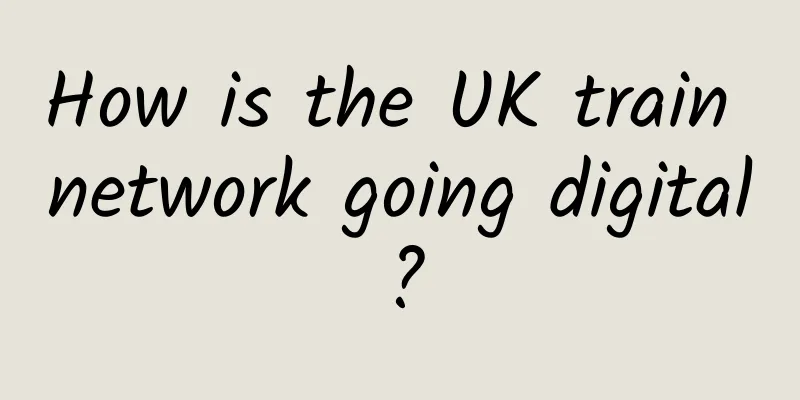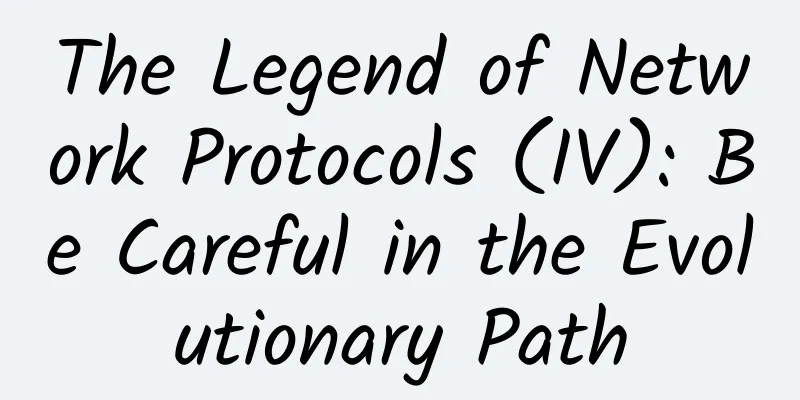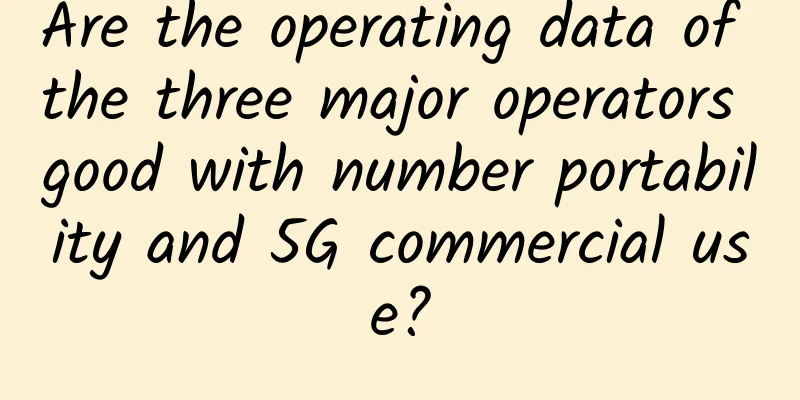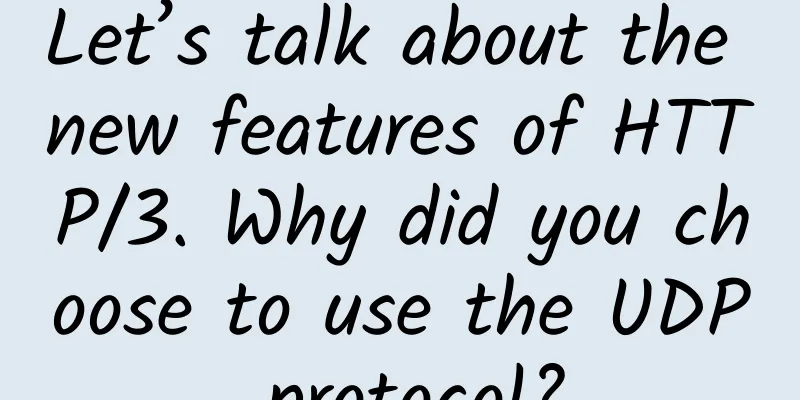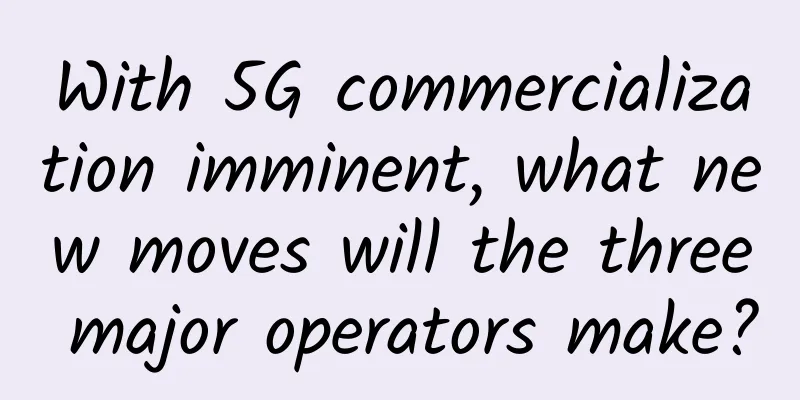Top 10 Web Trends: How to Stay Ahead in 2021

|
【51CTO.com Quick Translation】 Due to the COVID-19 pandemic, many companies now conduct business through the Internet and cloud platforms to remain competitive in the market. This shift in working methods has intensified competition among technical solutions, including programming languages and frameworks. As a result, running web projects has become more difficult. Given the development trend of technology, the chief technology officer (CTO) and product owner of the enterprise may be afraid of missing out on more opportunities. They are afraid of the high cost of making the wrong choice, especially when developing or deploying large projects. This article will introduce some of the latest trends and technological innovations in network development and explore the technology stack that can shorten development time and improve performance and security. 1. Choose the right infrastructureChoosing the right infrastructure is crucial for a web development project. The evaluation and comparison of architecture alternatives should take into account many factors, such as performance, scalability, capacity, maintenance costs, etc. The ambiguity here may cause confusion. For example, a microservice architecture without DevOps will not run faster. In order to increase the speed of development, the cloud platform is still one of the best options, although it requires a lot of expenses. There are two main types of infrastructure services available today – Backend as a Service (BaaS) and Platform as a Service (PaaS). Developers’ attitudes towards adopting BaaS and PaaS and choosing between the two are different. Backend as a Service (BaaS), also known as Mobile Backend as a Service (MBaaS), provides developers with a service that connects web or mobile applications to cloud services with the help of application programming interfaces (APIs) or software developer kits (SDKs). By adopting BaaS, enterprises can shorten their time to market and reduce costs in infrastructure management. Major BaaS include Parse, Firebase, AWS Amplify, Azure Mobile Apps, and CloudKit. Function as a Service (FaaS) is another cloud computing service integrated into BaaS. It foresees a platform for developing, running, and managing application functions. This model supports the creation of microservice applications. With FaaS, its expansion or reduction can be automated. Well-known FaaS in the industry are IBM's CloudFunctions, Amazon's AWS Lambda, Google Cloud Functions, Microsoft Azure Functions, and OpenFaaS. Platform as a Service (PaaS) provides infrastructure for application development, allowing customers to design, test and host. This platform-based service runs as software on public infrastructure, private cloud or public cloud services. It includes a variety of templates, tools, libraries and codes. With PaaS, you can speed up the project development process while reducing costs. The following diagram is an example of management capabilities across various types of infrastructure. Note that the naming of these capabilities is generic. 2. JAMstack as an alternative to monolithic toolsThe term JAMstack was introduced by Mathias Billman, CEO of Netlify, and it means a combination of three basic elements: JavaScript, API, and markup. It can be seen as a methodology for fast, secure, and scalable web and application development. With JAMstack, developers don't have to worry about the backend server logic, just the presentation layer. Most of the functionality is retained on the client, and other functions that require a lot of manual work are implemented through third-party APIs. As a result, many SaaS applications and outstanding websites have been built using JAMstack. This trend offers a promising future for web and application development, combining better tools and technologies (e.g. React, Webpack, React-router, GraphQL) in a single solution. JAMstack Workflow (1) Write code and push it to your source repository. (2) Design pre-built content. (3) Send the constructed file to a content delivery network (CDN). (4) The user requests the page (no interaction with the origin server is required because the pre-built content can be obtained from the CDN). As for core updates, they are pushed through Git. This allows the site to be rebuilt through the latest tools. Static site generators like Gatsby or Hugo are typical examples of such tools, as they are an integral part of the JAMstack approach. JAMstack is used by world-renowned companies such as Mozilla, Nike, Smashing Magazine, etc. They choose this solution for different reasons, the main reason being to reduce the reliance on the server by solving tasks on the client side, accelerating the load and improving performance. According to a survey conducted by Netlify, typical business use cases for Jamstack include consumer software (45%), internal tools (36%), and enterprise software (35%) (with the overall percentage higher than 100% since respondents could select multiple options). JAMstack is well suited for providing high availability to large sites that serve millions of users per year. However, it is not well suited for web application development. 3. Widespread use of static site generatorsA static site generator (SSG) is a software application used to create HTML pages based on templates or components and content sources. SSG may be a good alternative to a database-driven content management system (CMS). The use of SSG is an increasingly popular trend in developing new classes or web applications. The reason lies in the difference between the traditional web application stack and SSG. Static site generators allow page views to be obtained and served in advance without waiting for the page to be requested and generated. It involves any view of the website at build time. Due to the pre-rendering, websites developed with SSG are more resistant to malware. The task of managing large content projects is being simplified by web framework applications, from Gatsby, Gridsome, and Next to Nuxt. Notably, Figma and DigitalOcean are based on GatsbyJS, which is known as a fast and fluid framework with an advanced ecosystem. 4. Switch to a Headless CMSBusinesses that choose Headless CMS benefit by implementing a scalable and flexible solution. In Headless CMS, which is known as a backend content management system, the “header” which is the presentation layer and the “body” which is the content repository are separated from each other. The interface envisioned in Headless CMS allows users to manage APIs and content. But in this solution, the way the content is displayed has not received attention. The main idea is to store and deliver content, enabling editors to develop together. Developers are finding headless CMS to be a suitable solution these days, hence we can see the increasing popularity of Jamstack-based headless Ghost, Strapi, and Netlify CMS. Tinder, Buffer, DuoLingo, Mozilla, and DuckDuck use Ghost for their blogs. IBM, Walmart, NASA, and Societe Generale prefer using Strapi in production. According to a survey by a research organization, the global Headless CMS software market size was estimated at US$328.5 million in 2019 and is expected to reach US$1,628.6 million by 2027; and it will grow at a compound annual growth rate of 22.6% from 2020 to 2027. 5. Combine serverless and microservicesOver the past few years, the backend development trend has shifted from monolithic applications to microservices. Combined with Docker, Kubernetes, and serverless architecture, microservices architecture has become a way to scale fast-growing projects with exponential user base growth. Any serverless microservice sits in the serverless vendor's infrastructure and is started when the application needs it. When companies are interested in high-speed implementation and reduced investment, they usually choose FaaS. By adopting serverless microservices, they can get rid of vendor lock-in, and companies can choose Lambda Serverless, Google Cloud Functions, or Microsoft Azure Functions depending on the project. 6. Access custom APIGraphQL is used to provide a description of the data in an API. It can be considered as an alternative to the REST-based architecture. Compared to REST, GraphQL is a suitable tool for requesting specific data. In order to render a page, most applications need to fetch complex data. With GraphQL, the required data can be fetched in a query without causing unnecessary delays. As a result, users will run applications faster. Hundreds of enterprises have adopted GraphQL today. Enterprise web application development has characteristics related to enterprise-level business requirements. With the right development approach, enterprise applications can help solve existing challenges and achieve marketing and other business goals, including higher return on investment. Since each department of an enterprise has its own challenges, the software solution should be relevant to their needs. Sometimes, an enterprise selects a few enterprise applications that should communicate with each other in a consistent manner to gain operational advantages. 7. Adjust your web development roadmapThinking about web application development from a front-end perspective shows that creating a consistent product style is a challenge. This is especially true for large enterprises where many teams coordinate on the product side. Therefore, to create attractive digital products, enterprises need a team with deep expertise in design systems. In this case, the style guide enables the business to find and use the libraries and documentation they need. The guide is a version-controlled code, so it is clearer and easier to maintain than any documentation. In web development, applying a design system has become a great way to collaborate between teams and directions, resulting in better focus. The challenges that arise in development are related to many reasons, such as the popularity of microservices, infrastructure as code, and container orchestration to Kubernetes. To address these challenges, the platform engineering team responsible for enterprise web development needs to be involved. 8. Promote the application of complex solutionsAdopting AI solutions in applications requires a lot of computing resources, but it is also possible to use machine learning (ML) tools provided by cloud computing providers. These tools are effective but expensive. Adopting any new tool in the architecture will increase the overall cost. Part of the need for complex tools can be avoided, and enterprises must take this into account. It’s worth noting that to solve machine learning challenges, you don’t always need to employ neural networks or GPUs. A combination of simple models and tools along with the right amount of Python code is sufficient to accomplish these tasks. Regarding the modernization of legacy applications, an "outside-in" approach is being used to accomplish the task, where the old code is encapsulated in the new code. This approach improves the ability to manage functionality. The alternative approach for legacy systems is an "inside-out" approach, which means embedding the beginning of the new single-page application (SPA) into the HTML document that contains the old SPA. SPA framework users can tolerate the performance impact of increased page size. SPA injection allows the old SPA to be removed until the new SPA fully takes over. 9. Carefully research new opportunitiesLow-code or no-code platforms have become a hot topic. They are suitable for solving specific challenges in limited areas. Low-code platforms allow enterprises to develop applications and processes through visual interfaces and simple logic rather than intensive coding. Another helpful approach is import maps for microfrontends. When multiple microfrontends are combined in one application, the system chooses which and how to load them. Developers focus on creating unique solutions or apply larger frameworks. Import maps are the new standard that will help in both cases. Import maps for microfrontends allow for accurate separation of concerns. The JS code points out which parts to import, and the script tag in the HTML shows where to load the frontend from. The server is used to generate the HTML, so dynamic configuration can be applied at rendering time. Today, the import map is maintained by Chrome. Anyway, SystemJ Spolyfill makes it possible for wider application. 10. Develop enterprise toolsSentry is a suitable tool for many teams that need to report front-end errors. Errors detected on different end-user devices are being categorized and handled with built-in features (patterns and grouping tools to reject errors). With the addition of Sentry in the continuous delivery (CD) pipeline, its debugging becomes more convenient and efficient as it is easier to find out which software errors are related. Sentry is a Saas, but it ensures public access and is free for smaller-scale use cases. MLflow is an open source platform for managing the machine learning lifecycle. The tool consists of separate components, namely collections of runs, metrics, and projects, as well as a registry to store and discover them in a central repository. MLflow supports open standards and can be combined with various tools in the ecosystem. MLflow is available in AWS and Azure and is rapidly improving for modern projects. The tool is suitable for management and tracking tasks and supports models based on user interface (UI) and API. The main issue related to MLflow is large-scale unification in a single platform, including model scoring and serving. Continuous Integration (CI) servers and development tools are in high demand. They range from simple cloud hosting services to complex code-defined pipeline servers supporting fleets of build machines. There are a plethora of options available today, so the introduction of GitHub Actions is considered a very critical step. In any case, GitHub Actions enables developers to work on small projects. The built-in tools are in the source code repository. The community has come together around this functionality, which has led to the emergence of user-contributed tools. These tools are being implemented through the GitHub Marketplace. Code and Git history can be exported in alternate hosts, but there is no equivalent functionality for development workflows on GitHub Actions. Also, developers should determine if the project is large enough to apply a standalone pipeline tool. But for small projects, GitHub Actions is worth a look. The Future of Web Development.NET 5 represents a major step forward in consolidating .NET Core and .NET Framework into a single platform. Enterprises should begin developing strategies to migrate their development environments (fragmented combinations of frameworks depending on the deployment target) to a single version of .NET 5 or .NET 6. When it is available, the advantage of this approach will be a universal development platform regardless of the operating environment: Windows, Linux, cross-platform mobile devices (via Xamarin), or browsers (using Blazor). While polyglot development remains the preferred approach for enterprises with a supportive engineering culture, other enterprises will find it more efficient to standardize on a single platform to make .NET development more efficient. Google recently made Flutter 2.0 available for Web developers. So far, Flutter mainly supports native iOS and Android applications. However, the vision of the Flutter team is to support building applications on every platform. Flutter for Web is a step in this direction as it is suitable for building applications for iOS, Android, and browsers from the same code base to achieve business goals. Building forms for the web remains one of the long-standing challenges of front-end development, especially with React. React Hook Form is a replacement for the previously used Formik. React Hooks already existed when React Hook Form was created, so it can be used as a first-class concept: the framework registers and tracks form elements as uncontrolled components through Hooks, significantly reducing the need for re-rendering. Its size and the amount of boilerplate code required have also been simplified. As a result, developers can use modern tools to provide a seamless user experience for enterprise web projects. The above is an overview of web application development trends that enterprise CTOs should consider when defining their development strategy. These trends can complement items covering other trends - from voice search enabled by the Internet of Things to design for motion and the increased importance of cybersecurity. Original title: Top 10 Web Development Trends: How To Stay Ahead In 2021, author: Yuriy Luchaninov [Translated by 51CTO. Please indicate the original translator and source as 51CTO.com when reprinting on partner sites] |
<<: 5G drives growth in rising private mobile network market
>>: 5G connectivity enables smart substations
Recommend
Virtono: New data center in Romania, 25% discount on all VPS starting at 11.21 euros per year
I received an email from Virtono two days ago. Th...
Working principles of physical layer/data link layer/network layer
[[279942]] Physical Layer Physical layer equipmen...
Accelerating new infrastructure construction: Single-wavelength 200G backbone network is about to emerge, how far is 400G?
While the new infrastructure is accelerating the ...
How to use SSL/TLS in Node.js
This article is reprinted from the WeChat public ...
Hosteons July promotion: Double memory or upgrade to 10Gbps port, starting at $16 per year, 5 data centers in Los Angeles/Dallas
Hosteons has just launched a promotion for July. ...
Are enterprises ready for open RAN?
The increasing deployment of 5G has brought about...
Exploration of 5G and edge computing applications in the post-epidemic era
AT&T and many other leading wireless network ...
Replacing with a new one doesn’t work? Learn how to adjust the wireless router signal
Whether it is Tieba, Weibo or the discussion area...
Guanmai Technology CTO Miao Quan: Steadily enter the SD-WAN market and be prepared to deploy 5G
[51CTO.com original article] From the emergence t...
HostYun: Hong Kong CN2 GIA line VPS monthly payment starts from 22 yuan, AMD+M.2 SSD high performance
Recently, someone is looking for a Hong Kong CN2 ...
The core network and its vital role in cellular connectivity
The emergence of the Internet of Things (IoT) and...
Will remote work boost unified communications interoperability?
As more employees work remotely from home during ...
A practical guide to running databases across regions and Kubernetes clusters
Translator | Kang Shaojing Planning | Yun Zhao Am...
DiyVM: US CN2/Hong Kong CN2 VPS monthly payment starts from 50 yuan, Hong Kong independent server starts from 499 yuan/month
DiyVM is a Chinese hosting company founded in 200...
Stay true to our original aspiration and keep moving forward | What did they gain from their journey to Huawei's ICT ecosystem?
[51CTO.com original article] Summer is coming to ...
